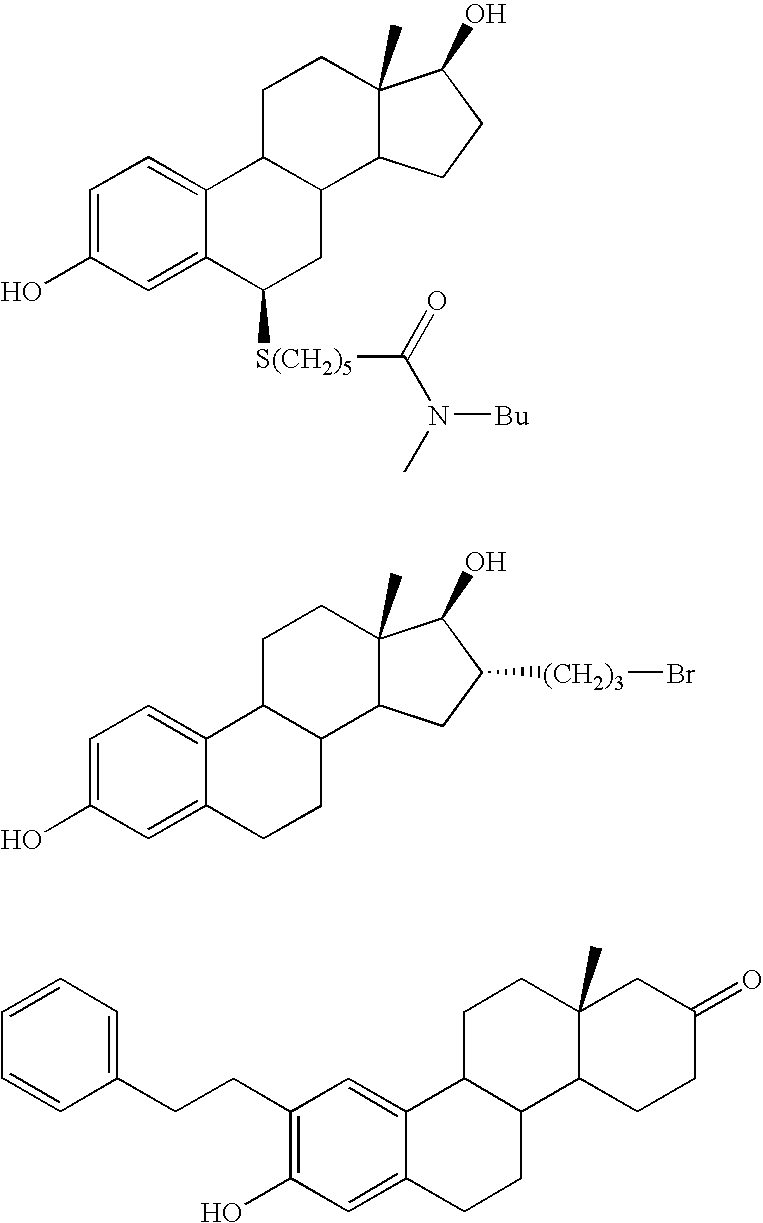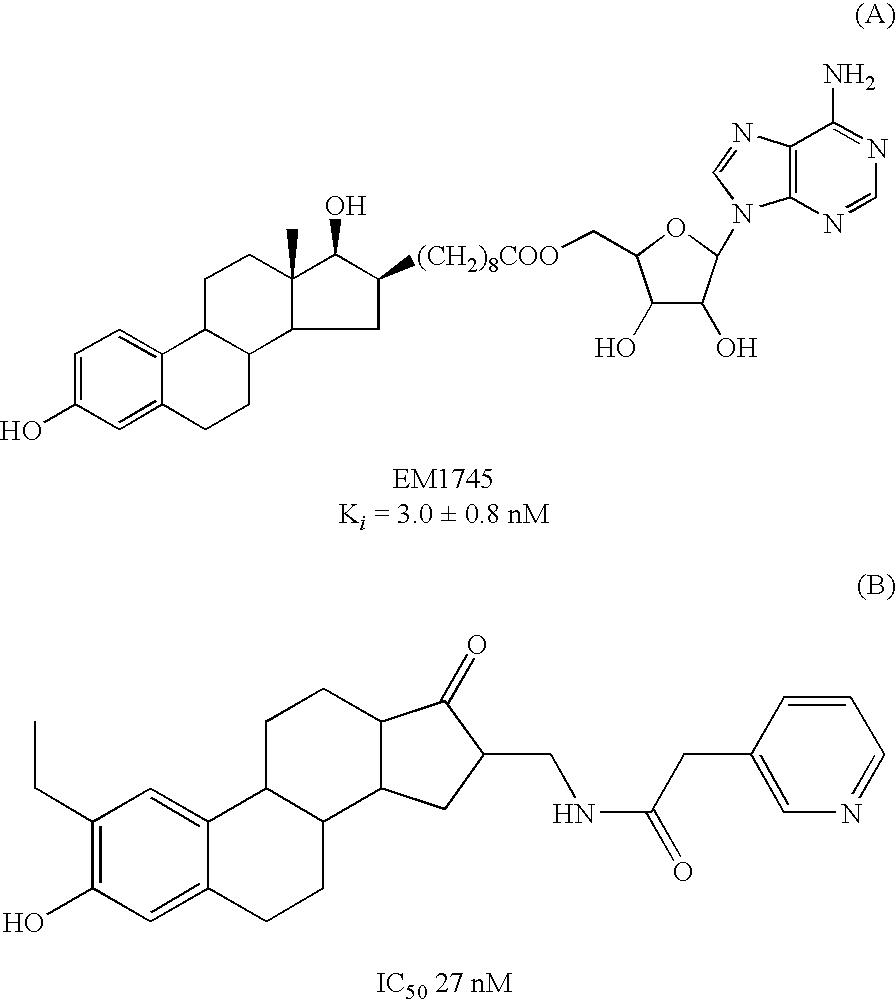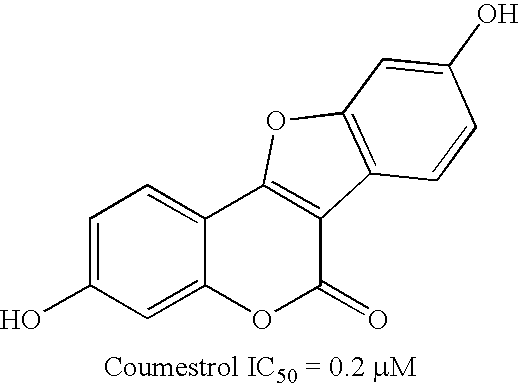17Beta-hydroxysteroid dehydrogenase type 1 inhibitors for the treatment of hormone-related diseases
a technology of steroid dehydrogenase and inhibitors, which is applied in the direction of biocide, plant growth regulators, animal husbandry, etc., can solve the problems of increased fracture risk, decreased use of danazole, and different intensities of pain and variable character, and achieves low affinity
- Summary
- Abstract
- Description
- Claims
- Application Information
AI Technical Summary
Benefits of technology
Problems solved by technology
Method used
Image
Examples
examples
General Information and Methods
Chemical designations: The chemical designations of the compounds are in accordance with IUPAC nomenclature.
[0100]Thin-layer chromatography (TLC): For thin-layer chromatography, Alugram® SilG / UV254 plates were used, which are plates having a thickness of 0.2 mm coated with silica gel 60 and a fluorescence indicator, supplied by Macherey-Nagel. For preparative TLC, glass plates coated with silica gel 60 and a fluorescence indicator (SilG25 / UV254) from Macherey-Nagel were used. The layer thickness was 0.25 mm.
Column chromatography (CC): Silica gel 35 / 40- 63 / 70 μm from Merck served as a packing material for the column chromatography that was performed under pressure, and silica gel 60, 0.05 / 0.063 / 0.07-0.2 mm served for the column chromatography that was performed with no pressure.
Reactions in the microwave oven: The microwave oven used for the synthesis was an Emrys Optimizer Workstation.
Infrared spectroscopy (IR): The IR spectra of the neat substances we...
PUM
| Property | Measurement | Unit |
|---|---|---|
| thickness | aaaaa | aaaaa |
| thickness | aaaaa | aaaaa |
| temperature | aaaaa | aaaaa |
Abstract
Description
Claims
Application Information
 Login to View More
Login to View More - R&D
- Intellectual Property
- Life Sciences
- Materials
- Tech Scout
- Unparalleled Data Quality
- Higher Quality Content
- 60% Fewer Hallucinations
Browse by: Latest US Patents, China's latest patents, Technical Efficacy Thesaurus, Application Domain, Technology Topic, Popular Technical Reports.
© 2025 PatSnap. All rights reserved.Legal|Privacy policy|Modern Slavery Act Transparency Statement|Sitemap|About US| Contact US: help@patsnap.com



